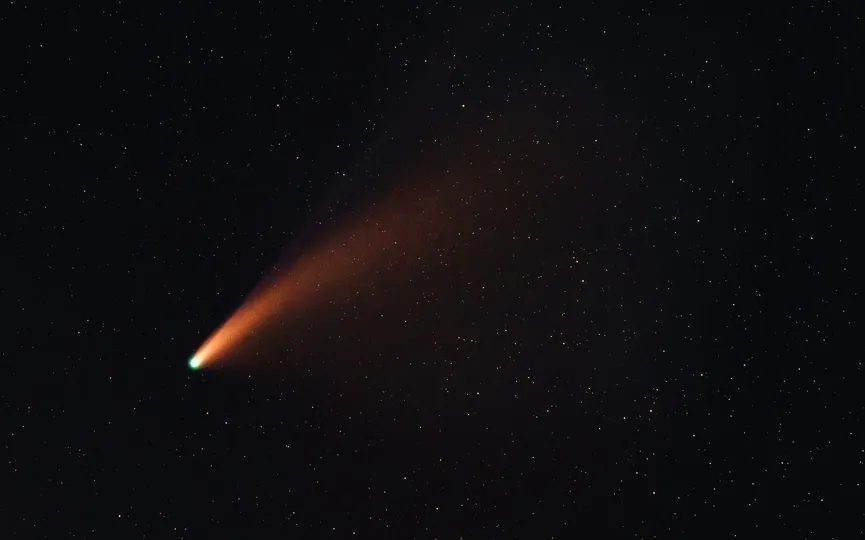Comet with Horns Approaching Earth
Astronomers are captivated by an extraordinary occurrence in the universe! Following the renowned green comet from last year, a new and intriguing celestial entity has emerged. Scientists have recently detected a peculiar comet that appears to possess horns. However, these “devil-like” horns are merely an optical illusion created by the spacecraft’s telescopic images. To clarify, the comet does not actually possess horns. So, what are these enigmatic features? Scientists have an explanation for this phenomenon.
About the comet
The newly discovered comet is known as 12P/Pons-Brooks (12P). It stands out as a cryovolcanic or cold volcano, a comet. Comets, including 12P, consist of a solid core containing a mixture of ice, dust, and gas. What sets 12P apart from most other comets is the remarkable accumulation of gas and ice in its nucleus. This build-up can lead to violent explosions, causing its icy contents, called cryomagma, to erupt through large cracks in the core’s crust.
According to a July 20 report by Spaceweather.com, astronomers observed a significant outburst from this comet, causing it to increase in brightness to about 100 times its normal appearance. This sudden increase in brightness was due to the expansion of the comet’s coma, which released gas and ice crystals from within. As a result, the comet reflected more light back towards Earth.
What do the experts say?
According to Spaceweather.com, the comet’s extended coma has taken the shape of horns. Some experts have even drawn comparisons between the deformed comet and the Millennium Falcon, one of the iconic spaceships from the Star Wars series.
In December 2022, astronomers observed the most significant eruption of comet 29P in about 12 years. This event ejected about a million tons of cryomagma into space.
As of July 26, the comet’s coma had expanded to about 143,000 miles (230,000 kilometers) in diameter, according to British Astronomical Association astronomer Richard Miles, who specializes in cryovolcanic comets, told Live Science.




